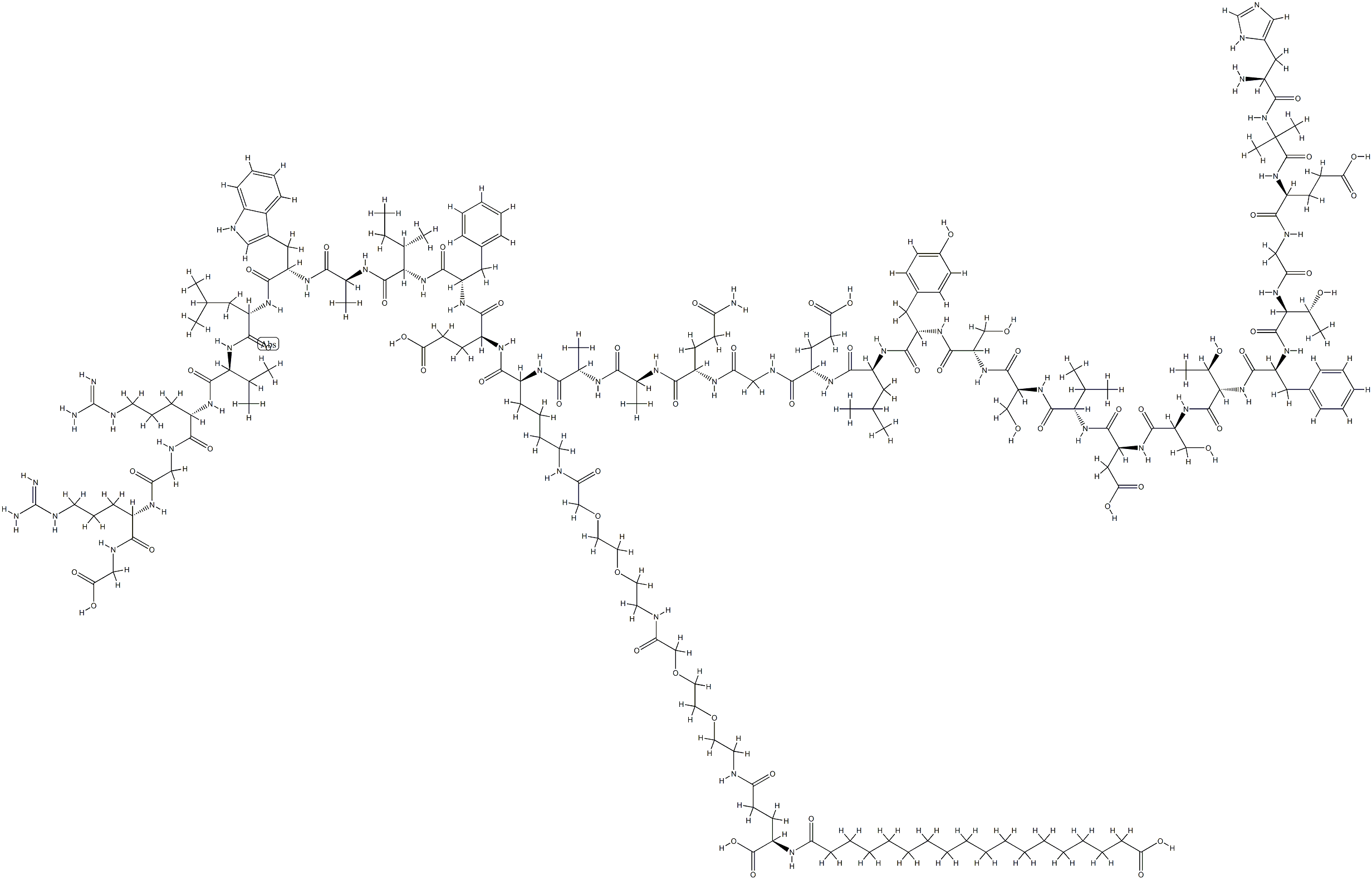Sermaglutide- Medical uses, Adverse effects, Mechanism of action etc.
Semaglutide is a glucagon-like peptide (GLP-1) analog. GLP-1 is a hormone produced in the small intestine that stimulates insulin secretion and inhibits glucagon secretion, thereby lowering blood sugar. Studies show that semaglutide reduces appetite, improves control of eating, and reduces food cravings in addition to improving glycemic control.
Semaglutide, sold under the brand name Ozempic among others, is an anti-diabetic medication used for the treatment of type 2 diabetes and chronic weight management. Semaglutide acts like human glucagon-like peptide-1 (GLP-1) such that it increases insulin secretion, thereby increasing sugar metabolism. It is distributed as a metered subcutaneous injection in a prefilled pen, or as an oral form. One of its advantages over other antidiabetic drugs is that it has a long duration of action, thus, only once-a-week injection is sufficient.

Medical uses
Semaglutide is indicated as an adjunct to diet and exercise to improve glycemic control in adults with type 2 diabetes.
In the United States, semaglutide is also indicated as an adjunct to diet and exercise for long-term weight management in adults with obesity (initial body mass index (BMI) ≥ 30 kg/m2) or overweight (initial BMI ≥ 27 kg/m2) with at least one weight-related comorbidity.
Semaglutide was found to be inferior to tirzepatide, in a study of tirzepatide (LY3298176) vs semaglutide once weekly as add-on therapy to metformin in participants with type 2 diabetes (SURPASS-2), in both endpoints of reduction in A1C and body weight, with a roughly similar safety profile.
Semaglutide injection (Wegovy) is used along with an individualized low-calorie, low-fat diet and exercise program to help with weight loss in overweight adults who may also have high blood pressure, diabetes, or high cholesterol. Semaglutide injection is in a class of medications called incretin mimetics. It works by helping the pancreas to release the right amount of insulin when blood sugar levels are high. Insulin helps move sugar from the blood into other body tissues where it is used for energy. Semaglutide injection also works by slowing the movement of food through the stomach and may decrease appetite and cause weight loss.
Mechanism of action
Semaglutide is a glucagon-like peptide-1 receptor agonist. It increases the production of insulin, a hormone that lowers the blood sugar level. It also appears to enhance growth of β cells in the pancreas, which are the sites of insulin production. It also inhibits glucagon, which is a hormone that increases blood sugar. It additionally reduces food intake by lowering appetite and slows down digestion in the stomach. In this way it reduces body fat.
Adverse effects
Side effects include nausea, vomiting, diarrhea, abdominal pain, and constipation. In people with heart problems, it can cause damage to the retina of the eye (retinopathy). Other, less common side effects include kidney problems, allergic reactions, low blood sugar, and pancreatitis.
Side effects including nausea, vomiting, diarrhea, abdominal pain, and constipation may occur. In people with heart problems, it can cause damage to the back of the eye (retinopathy). Side effects include kidney problems, diabetic retinopathy, allergic reactions, low blood sugar, and pancreatitis.
You may like
Related articles And Qustion
Lastest Price from Semaglutide manufacturers

US $10.00/box2025-11-21
- CAS:
- 910463-68-2
- Min. Order:
- 1box
- Purity:
- 99%
- Supply Ability:
- 1000Kilogram/Month

US $5.00-0.50/Gram2025-11-21
- CAS:
- 910463-68-2
- Min. Order:
- 1Gram
- Purity:
- 99% hplc
- Supply Ability:
- 500TONS



